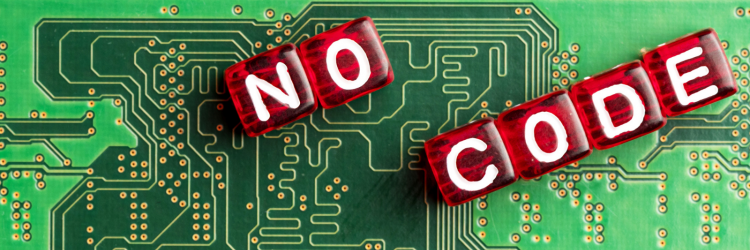If my kids want to figure out whether a band has made it into the mainstream, they ask whether I've heard of it. (Precious few pass the test.) Likewise, I know that an esoteric technology has hit it big when a national, non-technical publication writes a major feature about it -- and "no-code" technology just got its moment in the sun at the New York Times.
The attention suggests it's time for insurers to take a hard look at the possibilities of no-code -- generating computer programs without the need for programmers -- which could streamline numerous business processes and slash costs.
I think of no-code as sort of the graphical user interface for programming. Back in the 1980s and '90s, we were all lectured about how we needed to become more computer-literate. We were even told that national competitiveness depended on our becoming more computer-literate than other nations. Then the graphical user interface came along, and computers became much easier to use. There are people who delve deeply into the capabilities of their computers and are wildly computer-literate, but the difference between them and the rest of us is far less than it was when those of us among the great unwashed would just stare at the C prompt and wonder what to do next.
Although coding is far more complicated than just firing up my laptop, the same sort of progression toward simplicity has been going on for decades. Originally, coding was done in assembler -- strings of 1s and 0s that directly controlled the workings of a computer. Then compilers came along, letting programmers write in (still esoteric) languages that were translated into the 1s and 0s that controlled the computer. By the mid-1960s, the most powerful computers could handle operating systems, which made programming even easier. Operating systems migrated to minicomputers and then to personal computers in the 1980s. Object-oriented programming then arrived, meaning that programmers didn't have to write everything themselves for each app -- they could grab a calculator object or a clock object that someone else had written and just incorporate it into the app. Apps are now everywhere.
No-code takes programming to the next level, because it lets even us non-technical types do that sort of grabbing of objects to assemble apps that make computers do what we want them to do -- without having to wait for the IT department to have resources for us and without having to translate our current processes and our desires into some language that they can turn into code.
No-code also allows more fiddling -- and fiddling is crucial. At the moment, once you go through all the effort of producing a program, it's pretty well set in stone. But, with no-code, you're not only more likely to get things right the first time, because you know just how you want to operate, but you can test and reset easily. After all, you're doing this yourself, not via a steering committee of 12 people and a programming staff that may be many time zones away. You can keep fiddling until you get exactly what you need.
We've published a fair amount about no-code over the years -- the topic has intrigued me ever since I wrote about "code generators" for the Wall Street Journal back in the late 1980s -- and I certainly commend our articles to you, among them: Breakthroughs Via Low-Code and No-Code, Things Heating Up in Low-/No-Code and Unlocking the Power of No-Code.
But I have yet to see in the insurance industry the sorts of easily understandable examples that are in the New York Times article, so I encourage you to read it, too. For instance, the Times writes about a beekeeper who set up a camera outside his hives and trained a no-code AI app to monitor the pictures and warn him if the dreaded Asian murder hornet showed up. An organization that gives small amounts of cash to mothers in Nigeria to encourage them to immunize their children used a no-code system to build an app that lets employees track that data while in the field. A marketer used a no-code system to track which keywords and titles got his clients' blog posts the most visibility in search engines and to predict what would work for future blog posts. He says results improved by a third.
Describing the capabilities of no-code, the Times writes:
"'I could say something like, ‘Look up all the customer records from the last year,’ and it will go do that for you automatically,' said Charles Lamanna, Microsoft’s corporate vice president of business apps and platforms. He estimates that half of all office work could be automated with AI if there were enough developers to do the work. 'The only way to do this is to empower everybody to be a no-code developer.'
"Eventually the broader public will be able to create A.I.-enabled software in much the same way that teenagers today can create sophisticated video effects that would have required a professional studio a decade or two ago."
Now, none of this will happen especially soon. It's taken us 75 years to get from assembler to where we are today, so it's unrealistic to think we'll all be programmers soon. But, if the technology has caught the attention of an outlet like the New York Times, then I'd say it's worth at least getting acquainted with the technology, and maybe even exploring how it might be deployed in the field, where people are likely to have the sorts of painful but manageable itches that no-code can scratch.
Cheers,
Paul


